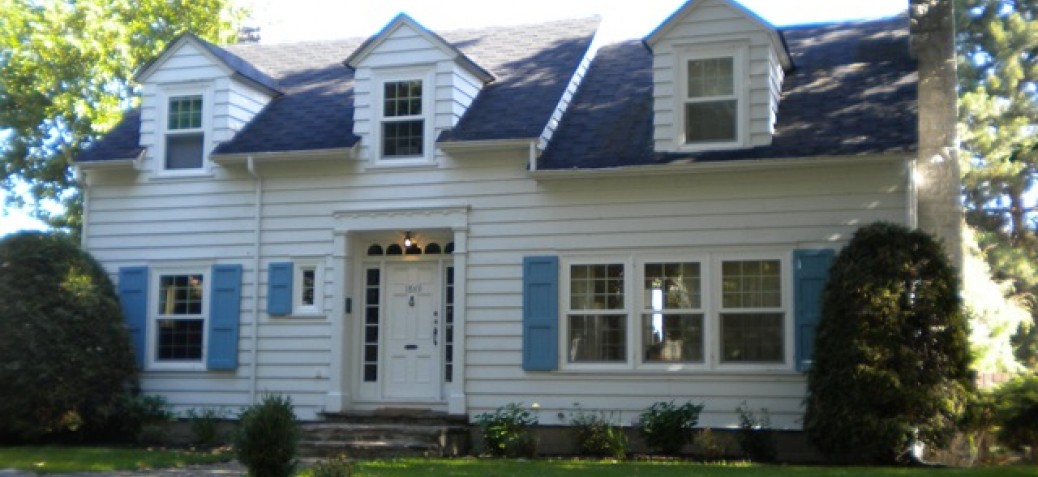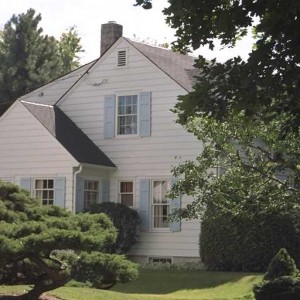MacLean House
Place Description
The historic place is the two-storey, wood-sided MacLean House, a building in the Georgian Revival Style, built in 1942 and located in the Abbott Street Heritage Conservation Area in Kelowna's South Central neighbourhood.
Heritage Value
The house has heritage value for having been the long-time home of Roy P. MacLean, the publisher and editor of the Kelowna Courier newspaper for thirty-eight years, from 1938 to 1976, and an extremely influential opinion-maker in the community. It also has value as an example of the Georgian Revival Style, acknowledging modernist design in a conservative way during a period of architectural change.
Roy P. MacLean and his wife Evelyn came to Kelowna in 1938, when he purchased an interest in Kelowna Courier Ltd. He succeeded George C. Rose, who had served as publisher and editor of the Kelowna Courier since 1905. During his time at the helm, MacLean took the paper from a weekly publication to bi-weekly in 1946, and then (after the paper was sold to the Thompson Newspaper chain in 1956, but with MacLean retained as editor and publisher) to daily publication in 1957.
With his editorial byline of 'rpm', MacLean is remembered positively as an advocate for community development and improvement, but also less favourably as a promoter of anti-Japanese hysteria in 1942. He was the leader of a regular 'shadow cabinet,' which met in a local cafe and was reputed to have determined provincial government policy during the twenty-year premiership of W.A.C. Bennett.
This substantial house was built for MacLean in 1942 by A.L. Patterson, a well-known local builder who seems to have built most of the houses in this Maple Street subdivision, which was established around 1935 in the filled-in oxbow of Mill Creek. This late example of the Georgian Revival Style illustrates the transition from period revivals to modernist design, as Canadian and American architects reacted to European modernism. This represents a simplification of building-forms without eliminating references to the past. The late Georgian Revival represents was popularized in the United States as that nation was inspired by revivals of American Colonial building, which had been popularized by the development of Colonial Williamsburg (in Virginia). Period-inspired elements in the MacLean House are rendered with a simplicity of form and detail, an acknowledgement of modernism.
Character Defining Elements
- Good example of the late Georgian Revival style, characterized by features such as the wood clapboard siding, dormer windows, entrance door, and shutters
- Steep gabled roof with three dominant dormers facing the street, two of which interrupt the eaves
- Offset gabled wing on the right-hand side
- Panelled entrance door with sidelights and transom, and a surround with pilasters and dentilled cornice
- Double-hung, six-over-six wood-sash windows with panelled shutters
- Wide horizontal wood clapboard siding
- White-painted siding with light blue trim
- Well-maintained yard with flagstone walk and stairs
- Well-pruned shrubs and large maples





